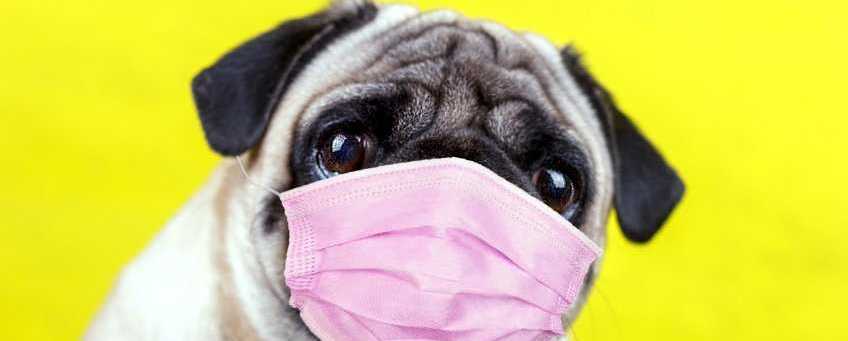Parvo is one of the deadliest viral diseases in dogs, and it is caused by a virus named Canine parvovirus Type 2 (also known as Canine Parvovirus 2). It was first discovered among dogs in Europe around 1976, and the gastrointestinal tract is the most affected portion of the dog’s body.
The carriers of this virus are not solely dogs because it is widespread in coyotes, foxes, raccoons, skunks, and wolves. The incubation period of this virus is usually 5-7 days, but it may prolong to 14 days; it is the period before the symptoms start appearing in the host’s body.
This virus is deadly and hard to remove because it is resistant to intricate environmental conditions. Because of its resistive nature, the virus can only be removed from the dog’s environment (bedding, kennel, crate, anywhere the dog hangs out) with household bleach and cleaning products.
NOTE: Under no circumstances should you treat your dog with household bleach and cleaning products, and be sure that his/her environment is thoroughly rinsed before they are allowed back into that area.
Some dog breeds are more likely to fall prey to this disease, for instance, Alaskan Sled Dogs, Dobermans, Pinschers, English Springer Spaniels, German Shepherds, Labrador Retrievers, Pit Bulls, and Rottweilers.

Signs and symptoms:
A dog suffering from canine parvovirus may show the early signs of parvo.
• Abdominal pain and bloating
• Hypothermia
• Vomits (with or without blood)
• Dehydration due to diarrhea
• Dysfunction of the immune system
• Damage to intestines
• Lethargy
• Weight loss
• Fast heartbeat
Canine Parvovirus Transmission:
Parvo is a highly contagious disease. It spreads from infected dogs to healthy ones easily.
Following are some means that can contribute to the transmission of parvovirus.
• Contact between a healthy and infected dog.
• Through contaminated bowls of water.
• Contaminated collars and leashes.
• Contaminated kennel surfaces.
• Stools and food of infected dogs.
• Clothing of people handling infected dogs.
The pragmatic way to halt this is to remove the contaminated collar and leashes and clean the kennel surfaces and stools of infected dogs. Human contact with infected dogs should be decreased so humans can’t be the source of infection.
How to Diagnose Canine Parvovirus :
Diagnosis of canine parvovirus is based on clinical signs shown by an affected dog and its history. Your vet will conduct a physical examination of the dog and try to correlate different signs to reach a conclusion. Confirmation of the disease can be done through lab tests.
The following are the viable measures that could help in diagnosing CPV
• ELISA antigen test (utilizes fecal swab to detect CPV antigens, and it takes 10-15 minutes to complete)
• PCR (Affected by recent vaccination and can’t be performed at the shelter)
• CBC (Detects white blood cell count, which in case of CPV is low)
• Histopathology of the tissues if present in feces of the dog
• Radiological examination through X-rays and ultra-sound
The vet may ask for information regarding the complete history of the pet to understand the progression of symptoms.
Treatment of Canine Parvovirus:
Various viable steps aid in treating parvo in dogs. The first step is to isolate the host suspected or confirmed to have this virus from other dogs to prevent the spread of infection.
The other treatment steps depend on the dog’s condition which is diagnosed with this virus. The treatment may be supportive care, including fluid and electrolyte therapy, nutritional support, removal of intestinal parasites, anti-emetics, and antibiotics.
Some dogs may need fluid therapy. Fluid therapy helps maintain fluid levels in dogs that decline due to frequent vomiting and diarrhea, and it should continue until oral medicinal intake is resumed.
The eradication of parasites from the intestines plays a significant role.
Fecal samples are examined to identify coccidia, roundworms, hookworms, or whipworms.
Dogs with worse CPV intestinal inflammation need prolonged treatment and require nutritional care.
The dogs must require ongoing care until they are fully recovered. To monitor the health and recovery pace, it is a rational step to keep the CPV recovering dogs separated from other dogs for at least two months. As the dogs have weak immunity, it’s advisable to provide an easily digestible diet to boost the immune system.
Prevention:
As it is a common saying, prevention is better than cure, so one should take preventive steps to avoid canine parvovirus.
Vaccination of puppies during their young age helps avoid being infected from CPV, and puppies should be vaccinated before reaching the age of 6 weeks. Vaccination should be done three times with a difference of every twenty-one days.
When the dogs have completed their vaccinations, they are allowed to contact other animals.
If you are not aware of the medical history of other dogs, then it is not a wise decision to allow your pet to make contact until a booster dose.
It is advised to wash the pots of water and food regularly with a non-toxic cleaner to avoid any trace of this infection.
Related websites:
American Veterinary Medical Association – Canine parvovirus
Merck and the Merck Veterinary Manual – Canine Parvovirus
